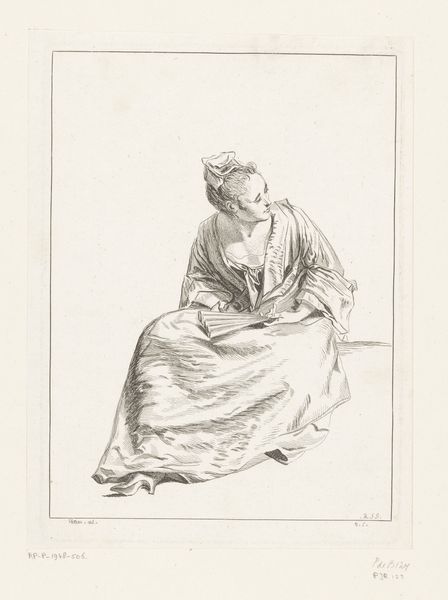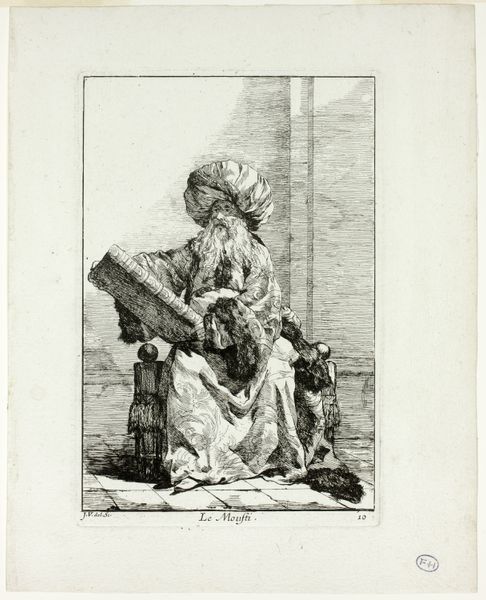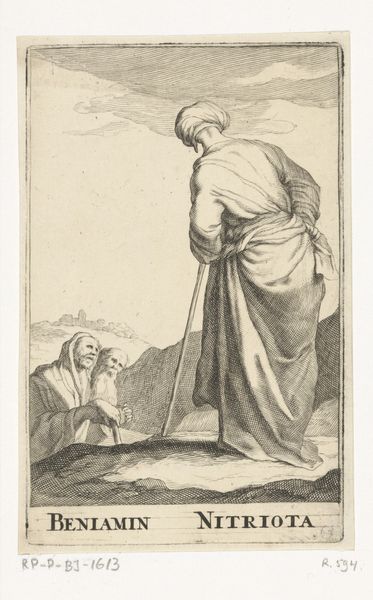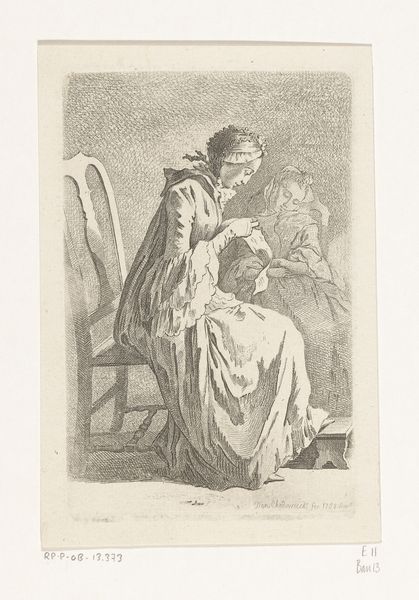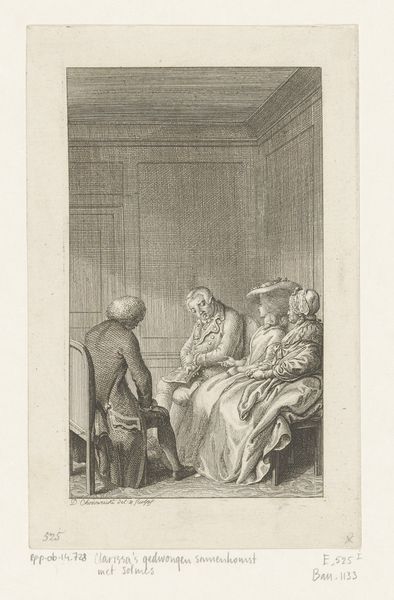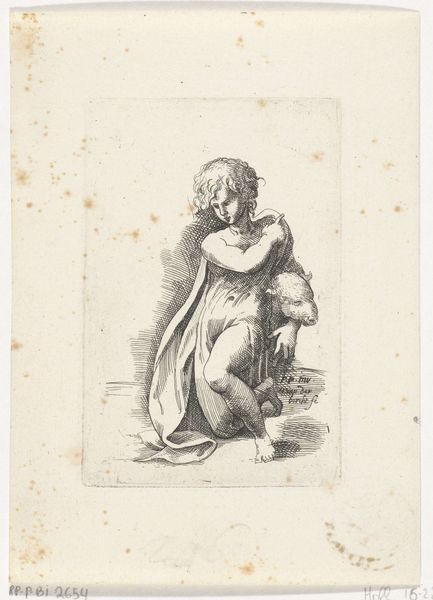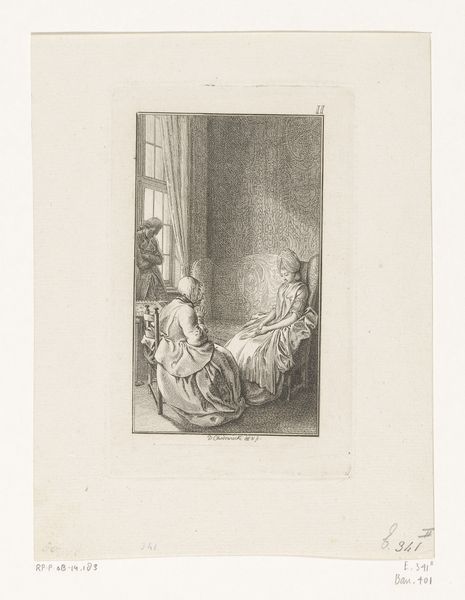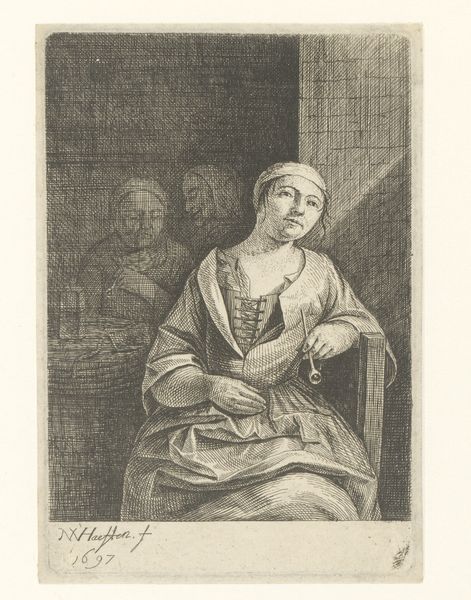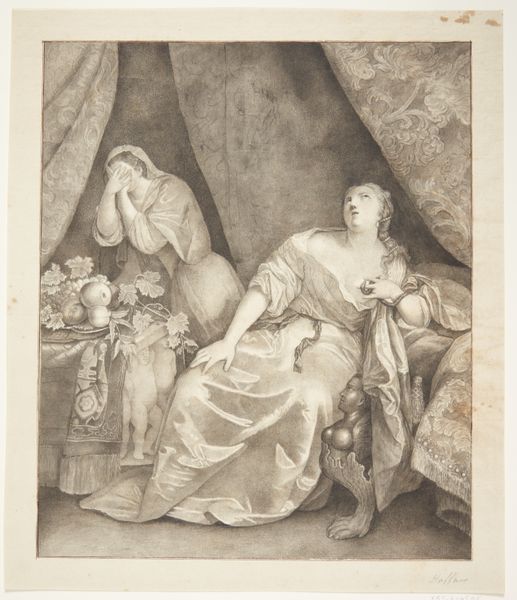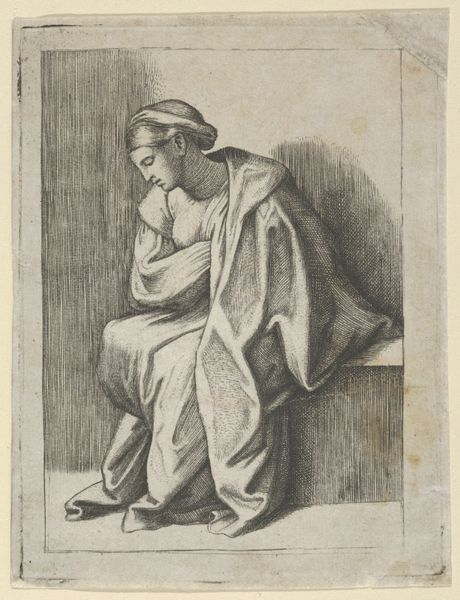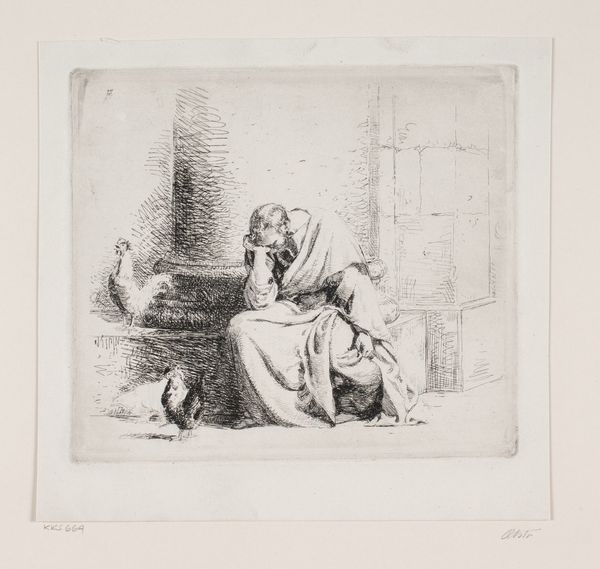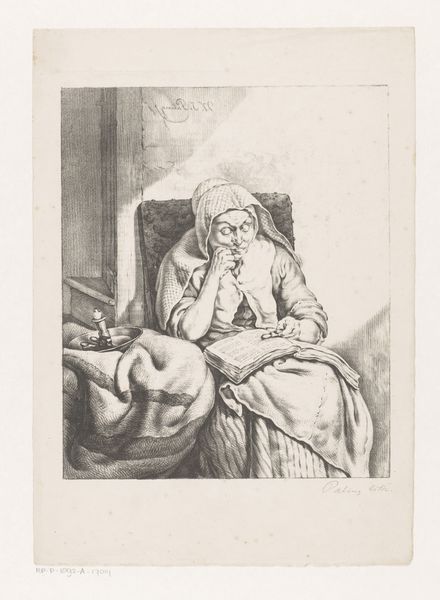
drawing, print, engraving
#
drawing
# print
#
figuration
#
line
#
genre-painting
#
engraving
#
rococo
Dimensions: Sheet: 9 3/16 x 6 7/8 in. (23.3 x 17.4 cm) Image: 8 3/4 x 6 13/16 in. (22.3 x 17.3 cm)
Copyright: Public Domain
Curator: Here we have "The Charming Doll," an engraving created in 1742 by Anne Claude Philippe, the Count of Caylus. Editor: It feels stark, somehow. Despite the title, there’s a somber, almost resigned mood. The heavy lines seem to weigh the figures down, grounding them in a very real space. Curator: The title plays with irony, I think. Dolls, historically, are often stand-ins, symbols of childhood lost too soon or of societal expectations placed upon women. The girl’s elaborate dress, juxtaposed with the woman’s simple garb, makes you consider these disparities. Editor: And the production of it, an engraving – there’s labor inherent in the mark-making itself. The lines aren’t fluid; they’re deliberate, suggesting time, effort, and the material process of transferring an image from mind to plate to paper. Was this intended for wide circulation, perhaps as a social commentary available to the masses? Curator: Most definitely. Caylus was very interested in creating accessible art. Consider how the woman’s kneeling position might represent a plea or servitude—connecting to Rococo's common fascination with fleeting social circumstances as commentary. The child appears poised and almost imperious, symbolizing future status. Editor: That stark contrast in social standing makes the image deeply unsettling. It feels like we're witnessing a calculated performance of class, and the medium becomes essential to this exchange, producing replicas of inequity. Curator: It truly speaks to how potent a visual can be in relaying stories across different social strata. Editor: And I suppose the availability afforded by printmaking made these concepts all the more accessible at the time. A potent tool indeed.
Comments
No comments
Be the first to comment and join the conversation on the ultimate creative platform.

